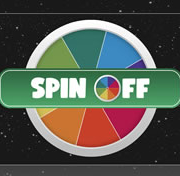Optics and Light, Physical Science Game
What does optics refer to in science? Optics is the branch of physical science that studies the behavior and properties of light, including its interaction with matter and the instruments that are used to detect it. So how do visible, ultraviolet, and infrared lights behave? Well, play this physical science game to learn more about optics and light.
Embark on a Luminous Journey: Exploring Optics and Light through Interactive Gaming
The world of science holds numerous wonders, but few are as captivating and essential to our daily lives as the study of light and optics. Light, an electromagnetic radiation visible to the human eye, interacts with the world around us in fascinating ways. And optics, the branch of physics that explores the behavior of light, plays a pivotal role in helping us understand these interactions. For budding young scientists eager to dive into this illuminating subject, what could be more thrilling than an interactive optics game that elucidates the principles of light and optics?
The Magical Interplay of Light and Matter
Before delving into the world of gaming, it's essential to grasp the basics. At its core, optics is the study of how light behaves when it comes into contact with different objects. From the brilliant rainbows that grace our skies after a light shower to the focused beam of a laser pointer, the principles of optics are at work, determining how light travels and interacts.
A fundamental concept here is understanding how light passes through optics. Depending on the medium and the surface it encounters, light can be refracted, reflected, diffracted, or even absorbed.
Discovering the World of Optics with a Game
Traditional teaching methods, while effective, often lack the excitement and engagement that interactive games can bring. Recognizing this, a specially designed game has been crafted for young learners that makes understanding the intricate concepts of optics both fun and informative.
Optics and Light: Physical Science Game: This game offers an interactive platform where players can experiment with various optical instruments, observe how light interacts with different mediums, and solve intriguing challenges that test and strengthen their understanding.
Beyond Optics: Delving Deeper into Science
While the study of light and optics is captivating in its own right, the vast realm of science has much more to offer. For those who've developed an appetite for discovery, a plethora of other interactive educational games await.
Explore More with ESL Games Plus Science Games: Dive into a diverse range of topics, from biology to physics, and let the interactive games guide young learners on their scientific journeys, making complex subjects more accessible and enjoyable.
Lighting Up Young Minds: The Power of Interactive Learning
The realm of light and optics is vast, filled with phenomena that intrigue the mind and stir curiosity. By introducing concepts through an optics game, we provide young learners with an engaging avenue to grasp complicated ideas. As they navigate challenges, experiment with simulations, and enjoy the gaming experience, they're not just playing; they're learning, understanding, and kindling a lifelong passion for science.
Optics and Light
In this article, you will learn about light. This includes laws of reflection, lenses, refraction, optical technologies, and the non-visible electromagnetic spectrum. All components are included in the unit, along with lesson plans for each topic.
Newton's views on light
Newton's scientific theory of light was based on a speculative conception of light - it was material corpuscles in motion. This idea was speculative, and he did not address the problem of gravitational force acting across an empty space or a frictionless medium. He did, however, demonstrate that light is made up of distinct spectral hues. As a result, light is a spectrum of colors, and these colors can be observed by humans.
Snell's laws of refraction
Snell's law of refraction for optics and light relates the angle of refraction to the refractive index of the second medium. It is a fundamental principle of optics and can be applied in many different fields. For instance, Snell's law states that light will bend toward itself if it is traveling through a medium with a lower refractive index than that of the first medium. This law can also be applied to rainbows.
Modern medical applications of optics
Modern medical applications of optics and light have helped scientists in the diagnosis and treatment of various diseases. The development of advanced imaging and diagnostic tools has enabled physicians to perform better procedures. Optical spectroscopy (also known as spectroscopy) is an essential tool in the diagnosis of diabetes and other diseases. The use of optical spectroscopy in diagnostic instruments has helped in the diagnosis of cancer and other diseases. In addition, photonics has played an important role in drug development and quality control.
Fiber optics
Fiber optics and light are two closely related concepts. One of the most important is how light is reflected. A fiber has a core made of clear glass, and its cladding contains a layer of glass. The cladding's primary purpose is to maintain the TIR, or total internal reflection. Loss occurs in the fiber when the cladding reduces the amount of core glass. Cladding loss can range from about five percent to as high as 25 percent, depending on the thickness of the cladding. A common multimode step index fiber has a loss rate of about 17%.










